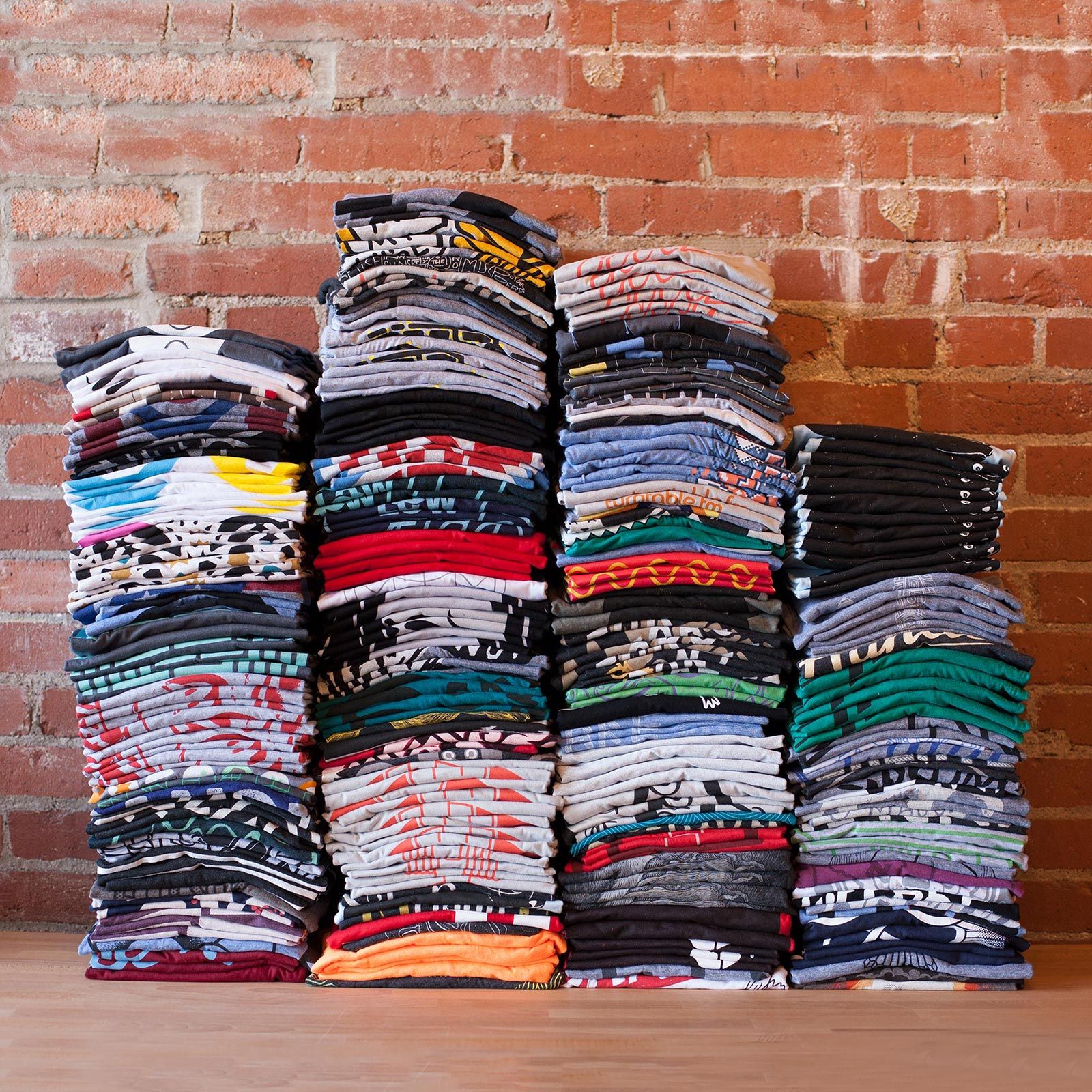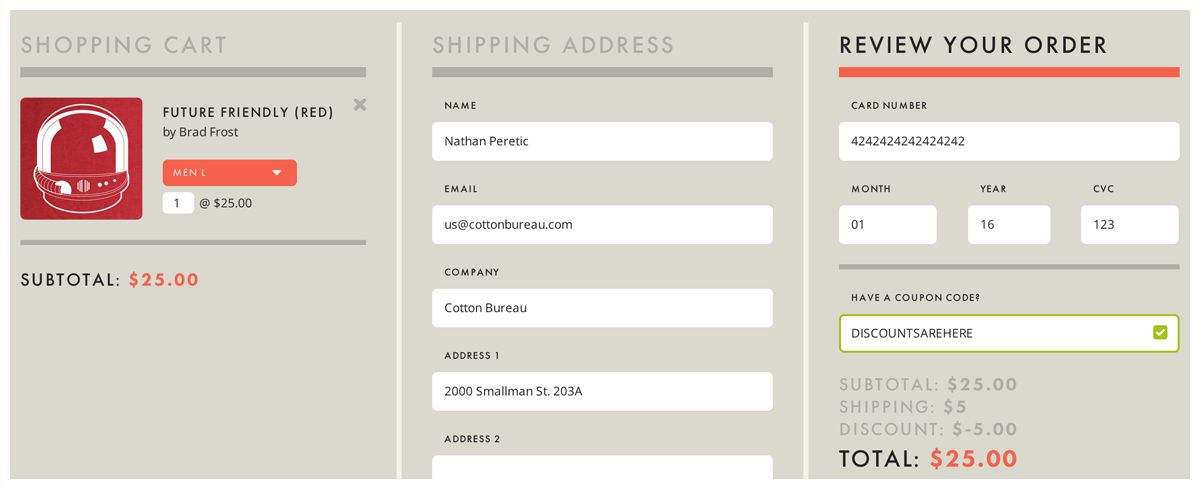We don’t know much about retail. It’s true we ran United Pixelworkers for years (still do), but it was always a side-business. We celebrated the good times and tried not to sweat the bad times. When Cotton Bureau launched last summer, an immediate wave of attention washed over us; the swells that followed in its wake obscured a critical reality of commerce: the summer slump.
Fast-forward to July 2014. The mighty Cotton Bureau schooner is becalmed, floating listlessly as we tug the sails this way and that, trying to catch the flimsiest breeze. Maybe you noticed the slipping numbers on the home page. Maybe you’re a designer wondering why shirts that sold so well in the past are barely going to print. More likely, you’re reclined on a chaise lounge by a pool somewhere, sipping lemonade, reading a good book, blissfully unaware that Cotton Bureau’s sales are sagging. (And good for you, by the way. That’s the right approach.)
At first, we blamed ourselves. Was it the switch to 12? Was it because we stopped tweeting every new shirt? Did we exhaust our customers with new shirt after new shirt after new shirt? We started digging into our numbers. Twitter’s new dashboard tells us that Cotton Bureau’s impressions are down 35.4% as compared to the previous 28 days. Ouch. Overall traffic peaked in March, held steady through early June, then began to decline heavily. The ratio of shirts hitting 25 was dropping as well. What did it all mean?
The first thing we had to remind ourselves was that Cotton Bureau is not a store, it’s a pre-sale engine. We can’t rely on standard numbers. We need to think differently about a successful pre-order and an unsuccessful pre-order. We need to acknowledge that events outside of our control (and sometimes even awareness) can radically alter our statistics. We have the privilege of providing a platform to a variety of designers—designers whose ability to bring traffic to the site can fluctuate by orders of magnitude. Separating the signal from the noise was going to be difficult.
Fewer people seeing our tweets was telling us something. Fewer people visiting the site was telling us something. Which numbers are significant? We chose to focus on conversion percentage, average order quantity, and shirts funded. Conversion percentage so far in July has been a rock-steady 2.07%—just a hair over our lifetime average of 2.05%. Clearly people coming to the site had not stopped buying tees, whether as a result of changes to the site or the type and quality of the t-shirt designs. Average order quantity has been similarly consistent. For every four orders we sell about five tees. That number jumped a few ticks back in March when we introduced the shopping cart and hasn’t moved since. That’s a good thing, we think. The first bit of bad news in our bellwether metrics was a decline in total shirts funded. More shirts go to print now than ever before thanks to the reduction of the goal from 25 to 12, but fewer of those shirts are getting to 25. That’s disappointing both to us (we make more money the more shirts we sell, naturally) and our designers (designers get paid only if a shirt reaches at least 25 sales).
Why are fewer shirts getting to 25? Is it because customers aren’t telling their friends as much as they used to (because the threshold for getting to print has been lowered)? Is it because we have more shirts than ever on the site, causing the same number of sales to be spread out? Or is it because, as we increasingly believe, it’s tough to move merchandise in the summer when people have better things to do than shop for t-shirts?
We asked some of our friends with more retail experience and the answer was unequivocal: summer is brutal, people will come back, relax. Easier said than done, of course, but we found one other number that helped make the medicine go down a bit more easily: search. Referral traffic comes and goes as a function of the shirts on the site and the outreach efforts we are able to make, organic search traffic, however, is a relatively reliable measurement of the core audience—and ours has been going up steadily for the last nine months (nearly 250%). July will be down, just slightly, but we’re no longer worried that the dip is anything more than the natural consequence of everyone getting a little well-deserved relaxation.
So what are we going to do about it? Well… not much. As much as we love numbers, we know that if you torture numbers enough, they’ll confess to anything. At our scale, a tweet here, a link there can alter an entire fortnight-worth of sales. We’ll continue running the numbers, trusting our gut, working hard behind the scenes to get more awesome shirts on the site, building new features, and talking with you all.
On that note, we started a Tumblr recently that Sara is having a blast using to share stupid Vines, examples of great design, and interviews with fantastic Cotton Bureau designers.
We also recently built a little discount engine for ourselves that we plan on putting to good use. (Keep an eye out for discount-laden tweets, yeah?) Of course, we’ve got plenty of other big ideas for the site, but timing-wise, we don’t really expect those to hit before the fall anyway.
Regardless of the features we add or don’t add, the coverage and traffic that does or doesn’t come, we have a reminder for ourselves and for you: we’ve all been conditioned to believe that the essence of business is growth. Everything needs to go up, up, up. If the business isn’t growing, Houston, we have a problem. That’s simply not true. The growth mantra dangerously warps our incentives as independent businesses and hobbyists, leading us, more often than not, to make decisions not on what is best for the customer—or even our own happiness and long-term well-being—but what most impresses our peers and satisfies the requirements of the investor playbook.
Look, business is simple if we don’t muck it up. Find something people want, produce it for a price less than they’re willing to pay, sell it with integrity. That’s the model we tested last June with Cotton Bureau, it’s the model we continue to believe in today, and it’s the model we expect to continue with as long as we’re in business.
Next year, we’ll know what to expect and won’t needlessly wring our hands. In the meantime, we’ll weather the current doldrums as best we can without resorting to an undue number of gimmicks or frantic pleas for attention. Enjoy your summer, and, if you don’t mind, tell a friend about Cotton Bureau. We’ve got the best t-shirts around.










